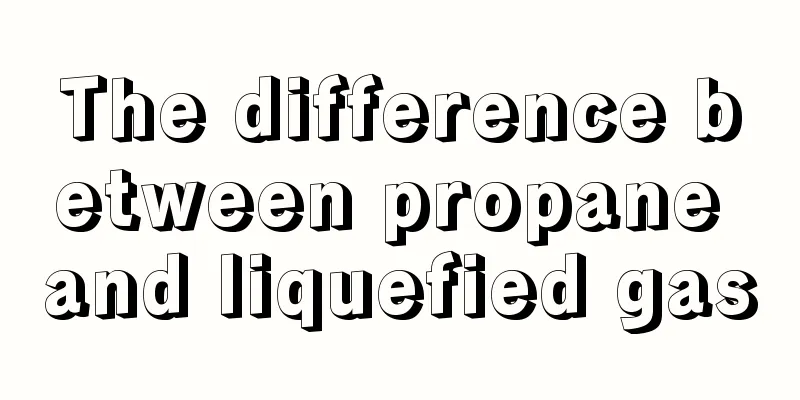The difference between propane and liquefied gas

|
In our daily life, we will find that cars, homes, and some power systems all need to use fuel, and the fuel combination is propane and liquefied gas. These are mainly used in some chemical industries, as well as household appliances and some non-electrical ones in daily use. The functions and composition of the body are very wide. Let us take a look at the differences. Propane and Main Uses Propane is commonly used as a fuel for barbecues, portable stoves, and motor vehicles. Propane is commonly used to power trains, buses, forklifts and taxis, and is also used as a fuel for heating and cooking in RVs and camping. In some rural areas of North America, people use propane to fill heat-producing appliances such as stoves, water heaters and hand dryers. As of 2000, 6.9 million American homes used propane as their primary fuel. Commercial "propane" fuel, or liquefied petroleum gas, is impure. In the United States and Canada, its main components are 90% propane with a maximum of 5% butane and propylene and odorants. This is the domestic standard for the United States and Canada, usually written as HD-5 standard. It is important to note that LPG produced from methane (natural gas) does not contain propylene, only propane obtained from the crude oil refining process does. Likewise, in some other countries, such as Mexico, the butane content standard is relatively higher. The main uses of liquefied gas are as raw materials for petrochemical industry, solvents for low-temperature extraction in subcritical biotechnology, and also as fuel. Liquefied petroleum gas is mainly used as a petrochemical raw material, for hydrocarbon cracking to produce ethylene or steam reforming to produce synthesis gas, and can be used as industrial, civilian and internal combustion engine fuel. Its main quality control indicators are evaporation residue and sulfur content, and sometimes olefin content is also controlled. Liquefied petroleum gas is a flammable substance. When its content in the air reaches a certain concentration range, it will explode when exposed to open flames. Application areas: Non-ferrous metal smelting: Non-ferrous metal smelting requires the fuel to have stable thermal quality, no combustion products, and no pollution, and liquefied petroleum gas meets all these conditions. After the liquefied petroleum gas is heated and gasified, it can be easily introduced into the smelting furnace for combustion. Shandong Jinsheng Nonferrous Metals Group Corporation has successfully used liquefied petroleum gas in the copper smelting process of Krupp smelting furnaces in Germany, replacing the original coal gas combustion process, reducing the harm of impurities such as sulfur and phosphorus, and improving the quality of copper materials. |
Recommend
How should we check for early breast cancer?
How should we check for early breast cancer? I be...
What are some tips for bent legs after ligament reconstruction?
Ligaments are the part that people pay the most a...
Can I drink yogurt after laser freckle removal
Laser freckle removal surgery is also a minimally...
What are the latest drugs for rectal cancer
What are the latest drugs for treating rectal can...
How to make rose perfume
In our lives, many people like the scent of roses...
How to improve low white blood cell count after chemotherapy for gastric cancer
How to improve low white blood cell count after c...
What foods should not be eaten for ovarian cysts
Ovarian cysts are a type of ovarian tumor in a br...
Symptoms of tendinitis fingers_Symptoms of tendinitis
Patients with tendonitis often feel pain, and the...
Early symptoms of ALS
There is a very rare disease in life called ALS. ...
How to treat acne on the neck, this is the best way
The hot summer is here again. Due to the vigorous...
Various ways to make soy milk
More and more people in our lives like to drink s...
Is color-changing lipstick poisonous?
Color-changing lipstick is magical. It can change...
Caesarean section scar tattoo
The advancement of modern reproductive technology...
What causes colitis?
Colitis is a common disease in daily life. If it ...
What should I do if I have a teratoma
Teratoma is also known as ovarian dermoid cyst. W...









